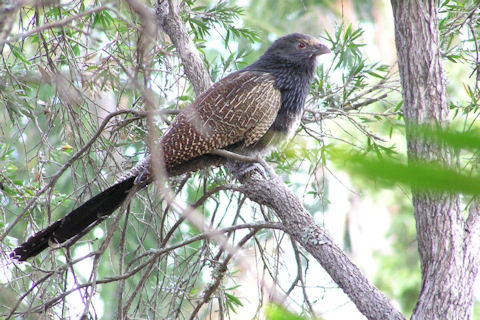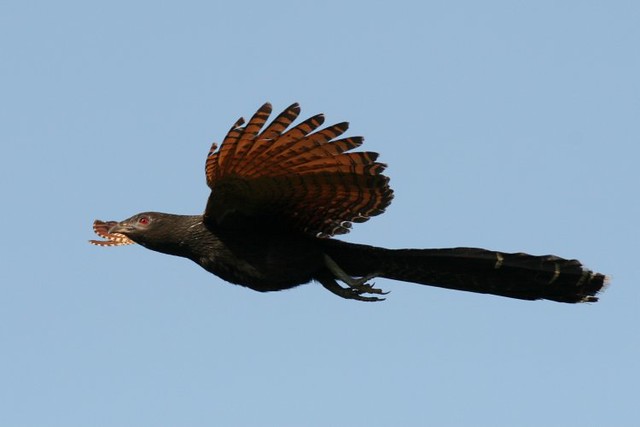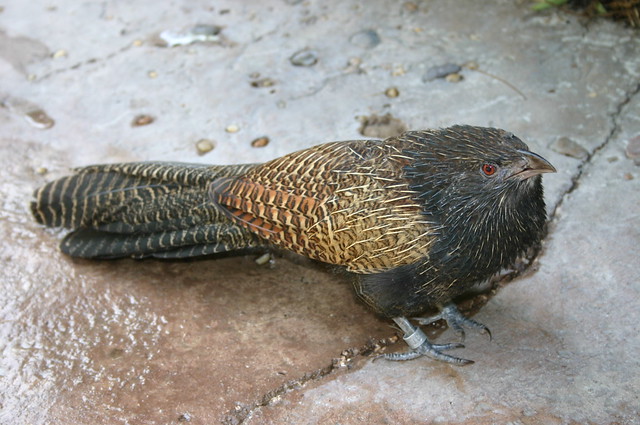Pheasant Coucal Biography
The Pheasant Coucal is a large, long-tailed, pheasant-like cuckoo which occurs in northern and easternAustralia , as well as southern New Guinea








The Pheasant Coucal is a large, long-tailed, pheasant-like cuckoo which occurs in northern and eastern
A large 'pheasant-like', ground-dwelling cuckoo, the Pheasant Coucal has a long tail and short rounded wings. In its breeding plumage, it has a black head, neck and underbody with the upperparts and wings reddish-brown with black and cream barring and the black tail is barred orange. Out of breeding, the head and back return to a reddish chestnut colour and the underparts are cinnamon brown, with all streaked boldly white. The eye is red. Sexes are similar in plumage, but females are larger than males. Young birds look like paler, non-breeding adults with orange spots on the head, neck and upper body. When disturbed, coucals run rather than fly, or fly clumsily, plunging into cover. Unlike most other cuckoos, the Pheasant Coucal is not a nest parasite.
The Pheasant Coucal is found in northern and eastern Australia , as well as New Guinea and East Timor . It is found from the Pilbara, Western Australia , to south-eastern New South Wales New South Wales it is mainly found east of the Great Dividing Range from the Queensland border to the southern Hunter region, with some around Sydney
The Pheasant Coucal feeds on the ground on large insects, frogs, lizards, eggs and young of birds and, sometimes, small mammals.
Pheasant Coucals form lasting pairs and, unlike other Australian cuckoos, build their own nests and raise their young themselves. The nest is usually hidden in thick grass or sugar cane or in weedy thickets and is a platform of sticks, grass or rushes, lined with leaves and grasses. The male usually incubates the eggs and feeds the young, with the female helping with feeding. More than one clutch can be laid in one season.
Pheasant Coucal

Pheasant Coucal

Pheasant Coucal

Pheasant Coucal

Pheasant Coucal

Pheasant Coucal

Pheasant Coucal

Pheasant Coucal

Pheasant Coucal
Wild Pheasant Coucal
Wild Pheasant Coucal
Pheasant 2.wmv
No comments:
Post a Comment